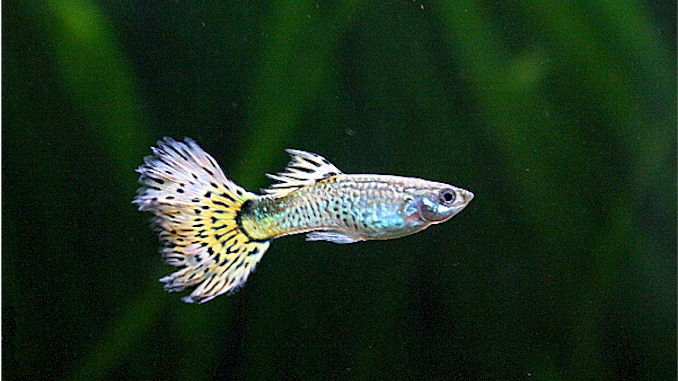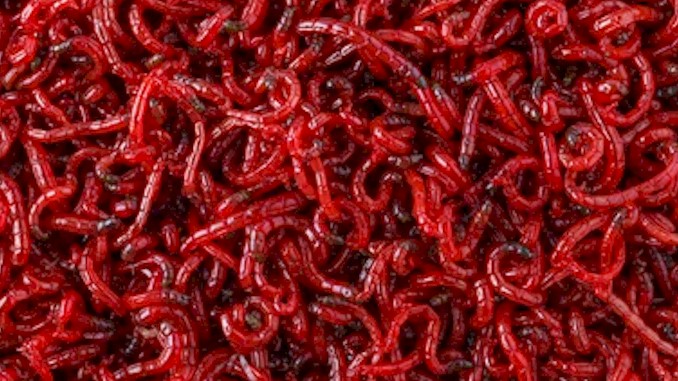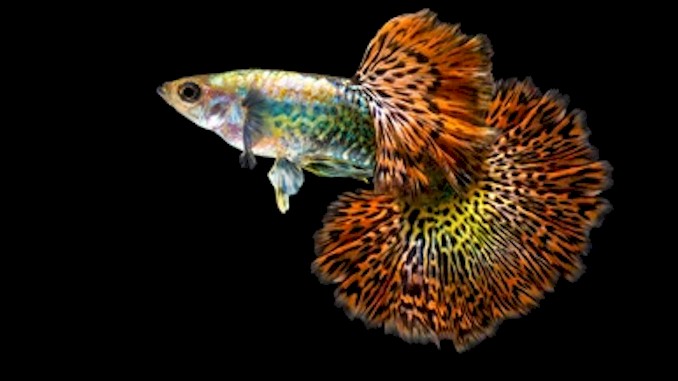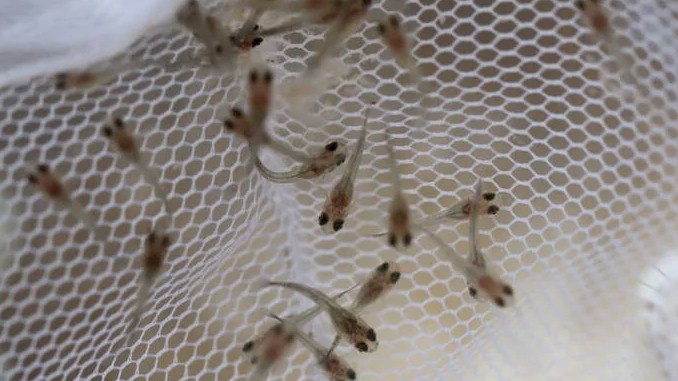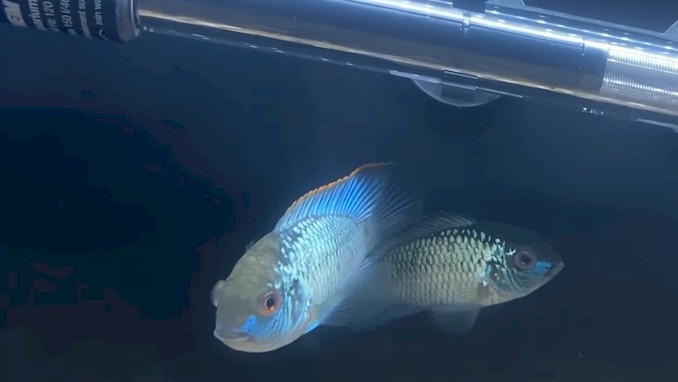Demystifying Guppy Fry Growth: A Guide
It can be frustrating to see your fry not developing at the expected rate, especially when you have put in the time and effort to care for them. In this post, I am going to share with you the potential reasons why your guppy fry may not be growing as they should and provide actionable steps to help them thrive. So, if you’re looking for answers to this problem, you’ve come to the right place.
Guppy fry may not be growing due to factors such as poor water quality, inadequate nutrition, overcrowding, or genetic abnormalities. To address poor water quality, ensure that the aquarium is properly cycled and maintained with regular water changes. Feeding a varied and nutritious diet, avoiding overcrowding, and culling genetically inferior fish can also improve growth rates.
While these factors can significantly impact the growth of your guppy fry, they are not the only possible causes. In the following sections, I will delve deeper into each of these factors and provide additional tips to help your guppy fry grow to their full potential. Whether you’re a seasoned aquarist or just starting, the information in this post will help you address this common problem and raise healthy guppy fry. So, read on to discover more helpful tips and insights!
Factors That Affect Guppy Fry Growth: Poor Water Quality, Inadequate Nutrition, Overcrowding, Genetic Abnormalities
Guppy fry are typically easy to care for and fast-growing, but sometimes they may not reach their full potential. This can be caused by a variety of factors, including poor water quality, inadequate nutrition, overcrowding, and genetic abnormalities.
Poor water quality is one of the most common reasons for stunted guppy fry growth. Ammonia, nitrite, and nitrate build-up in the water can harm fry and inhibit their growth. These compounds are typically produced by uneaten food, fish waste, and decaying plant matter. Maintaining proper filtration, performing regular water changes, and avoiding overfeeding can help prevent these issues.
Inadequate nutrition is another factor that can affect guppy fry growth. Feeding fry with a diet that lacks essential nutrients can lead to stunted growth and developmental problems. Fry require a diet high in protein, including small amounts of live or frozen foods like brine shrimp, daphnia, and mosquito larvae. It is also essential to provide them with a variety of foods to ensure they receive all the nutrients they need.
Overcrowding can also impact guppy fry growth. When fry are kept in an aquarium with too many other fish, they may not receive enough food, oxygen, or space to grow properly. Overcrowding can also increase stress levels, leading to weaker immune systems and slower growth rates.
Finally, genetic abnormalities can lead to stunted growth in guppy fry. Breeding fish with genetic defects can produce fry with developmental issues or deformities that impact their growth. Culling genetically inferior fish can help prevent these issues from being passed on to future generations.
In summary, poor water quality, inadequate nutrition, overcrowding, and genetic abnormalities are common factors that can impact guppy fry growth. Proper filtration, regular water changes, feeding a varied and nutritious diet, avoiding overcrowding, and culling genetically inferior fish can all help promote healthy growth rates in guppy fry.
What to Do If Your Guppy Fry Aren’t Growing Properly: Tips for Addressing Growth Issues
If you notice that your guppy fry are not growing as quickly as they should, there are several things you can do to address the issue. Here are some tips for addressing growth issues in guppy fry:
- Check Water Parameters: As mentioned earlier, poor water quality can have a significant impact on the growth of guppy fry. Make sure to test the water regularly and maintain optimal levels of ammonia, nitrite, nitrate, pH, and temperature, by using this well known API Aquarium Test Kit (link to Amazon). If levels are out of range, perform a water change immediately.
- Provide Proper Nutrition: Ensure that your guppy fry are receiving a well-balanced diet high in protein. Live or frozen foods like brine shrimp, daphnia, and mosquito larvae can help supplement their diet and provide essential nutrients. Avoid overfeeding, as excess food can cause water quality issues and negatively impact fry growth.
- Reduce Overcrowding: If your guppy fry are kept in an overcrowded aquarium, consider moving them to a larger tank or separating them into a separate breeding tank. This will provide them with more space and access to food, oxygen, and other resources.
- Monitor Water Temperature: Keep the water temperature stable within the range of 75-82°F (24-28°C). Rapid changes in temperature can stress the fry and slow down their growth rates.
- Consider Genetics: If you have been breeding guppies for some time, it’s possible that the issue may be related to genetics. If you notice consistent stunted growth in your fry, it may be time to re-evaluate your breeding program and consider culling genetically inferior fish.
- Consult with an Expert: If you’ve tried all the above tips and your guppy fry are still not growing properly, consider consulting with an expert in aquatic animal health. They may be able to identify other underlying health issues that are impacting fry growth rates.
As you see, addressing growth issues in guppy fry requires a combination of factors, including proper nutrition, water quality, temperature, and genetics. By following the tips above and monitoring your fry’s growth regularly, you can help ensure that they reach their full potential and grow into healthy, vibrant adult guppies.
How Long Does It Take for Guppy Fry to Grow? Factors That Affect Growth Rates
The growth rate of guppy fry can vary based on several factors, including genetics, diet, water quality, and temperature. On average, it takes about 3-4 months for guppy fry to reach adulthood, but growth rates can vary significantly based on these factors.
Genetics plays a significant role in determining the growth rate of guppy fry. Some strains of guppies grow faster than others, and this can impact the time it takes for them to reach adulthood. If you’re breeding guppies, it’s important to select healthy, high-quality fish that are known for their growth rates.
Diet also plays a crucial role in guppy fry growth. Fry require a high-protein diet to support their rapid growth, and feeding them a variety of live or frozen foods can help ensure they receive the necessary nutrients. Overfeeding can negatively impact water quality and slow down growth rates, so it’s important to feed them in moderation.
Water quality is another important factor in guppy fry growth rates. High levels of ammonia, nitrite, and nitrate can stunt growth and cause other health issues. Regular water changes, proper filtration, and monitoring water parameters can help ensure optimal water quality for your fry.
Temperature can also impact the growth rate of guppy fry. Fry should be kept in a temperature range of 75-82°F (24-28°C), and rapid changes in temperature can stress them and slow down growth rates.
Now you have learned, the time it takes for guppy fry to grow into adult guppies can vary based on genetics, diet, water quality, and temperature. By providing them with a well-balanced diet, optimal water quality, and stable temperature, you can help ensure that they reach their full potential and grow into healthy adult guppies.
When Do Guppy Fry Develop Color? Factors That Affect Color Development
Guppy fry are born with little to no color and can take several weeks to develop their distinctive patterns and colors. The development of color in guppy fry is influenced by several factors, including genetics, diet, water quality, and temperature.
Genetics plays a significant role in the color development of guppy fry. Different strains of guppies have distinct color patterns, and the offspring will inherit these traits from their parents. The intensity and brightness of colors can also vary based on genetics.
Diet also plays a role in the color development of guppy fry. Feeding them a diet rich in carotenoids can enhance and intensify the colors in their patterns. Foods such as brine shrimp, krill, and spirulina are high in carotenoids and can be a valuable addition to their diet.
Water quality is also a crucial factor in the color development of guppy fry. High levels of ammonia, nitrite, and nitrate can stress the fry and impact the intensity of their colors. Ensuring optimal water quality through regular water changes and proper filtration can help support healthy color development.
Temperature can also impact the color development of guppy fry. Fry should be kept in a temperature range of 75-82°F (24-28°C), and rapid changes in temperature can stress them and impact the intensity of their colors.
As you can see, the development of color in guppy fry is a complex process influenced by genetics, diet, water quality, and temperature. Providing them with a well-balanced diet, optimal water quality, and stable temperature can help support healthy color development and ensure they develop into beautiful adult guppies.
Feeding Guppy Fry: Tips for Providing Proper Nutrition and Avoiding Overfeeding
Feeding guppy fry can be a bit tricky as they have different nutritional needs than adult guppies. Overfeeding can also cause water quality issues, which can negatively impact their growth and development. Here are some tips for feeding guppy fry and providing them with proper nutrition:
- Offer small, frequent meals: Guppy fry have small stomachs and require frequent meals. Feed them small amounts of food several times a day to ensure they receive adequate nutrition.
- Provide a varied diet: Guppy fry require a balanced diet that includes protein, fats, and carbohydrates. Offer a varied diet that includes both commercial fry food and live or frozen foods such as brine shrimp, daphnia, and micro worms.
- Use a feeding ring: Using a feeding ring can help prevent overfeeding and ensure that all the fry have access to the food. This can also help keep the tank clean by keeping the food in one spot.
- Avoid overfeeding: Overfeeding can cause water quality issues and lead to poor growth and development. Only feed what the fry can consume in a few minutes and remove any uneaten food.
- Consider adding supplements: Supplements such as vitamins and probiotics can help support the growth and development of guppy fry. These supplements can be added to their food or directly to the tank.
- Monitor water quality: Overfeeding can cause water quality issues, which can negatively impact the growth and development of guppy fry. Monitor water parameters regularly and perform regular water changes to maintain optimal water quality.
In a nut shell, providing proper nutrition to guppy fry is essential for their growth and development. Feeding them small, frequent meals of a varied diet, using a feeding ring, avoiding overfeeding, and considering supplements can help support their health and wellbeing. Monitoring water quality and performing regular water changes is also crucial in ensuring optimal growth and development.
When Can Guppy Fry Be Introduced to Adult Fish?
When it comes to introducing guppy fry to adult fish, it is essential to ensure that the fry are large enough to avoid being eaten by their tankmates. The general rule of thumb is to wait until the guppy fry are about half an inch in length before introducing them to the community tank. However, the size of the fry is not the only factor to consider when deciding if it is the right time to introduce them to adult fish.
One factor to consider is the temperament of the adult fish. Some fish species, such as angelfish or cichlids, may be more aggressive and may see the smaller fry as food. In contrast, other species, such as tetras or gouramis, may be more peaceful and less likely to harm the fry. Additionally, the number of adult fish in the tank can also affect the safety of the fry. A tank with only a few adult fish may be safer for the fry than a heavily stocked tank.
Another factor to consider is the size of the aquarium. A larger aquarium can provide more hiding places for the fry to avoid being eaten by their tankmates. In contrast, a smaller aquarium with limited hiding places may not be suitable for introducing fry to adult fish.
It is also essential to consider the overall health and maturity of the fry. If the fry are not healthy or mature enough, they may not be able to handle the stress of being introduced to adult fish. Therefore, it is crucial to ensure that the fry are healthy and have grown to a sufficient size before introducing them to the community tank.
To sum up, introducing guppy fry to adult fish requires careful consideration of various factors, including the size and temperament of the adult fish, the number of adult fish in the tank, the size of the aquarium, and the health and maturity of the fry. By taking these factors into account, you can help ensure that your guppy fry have a safe and successful introduction to the community tank.


